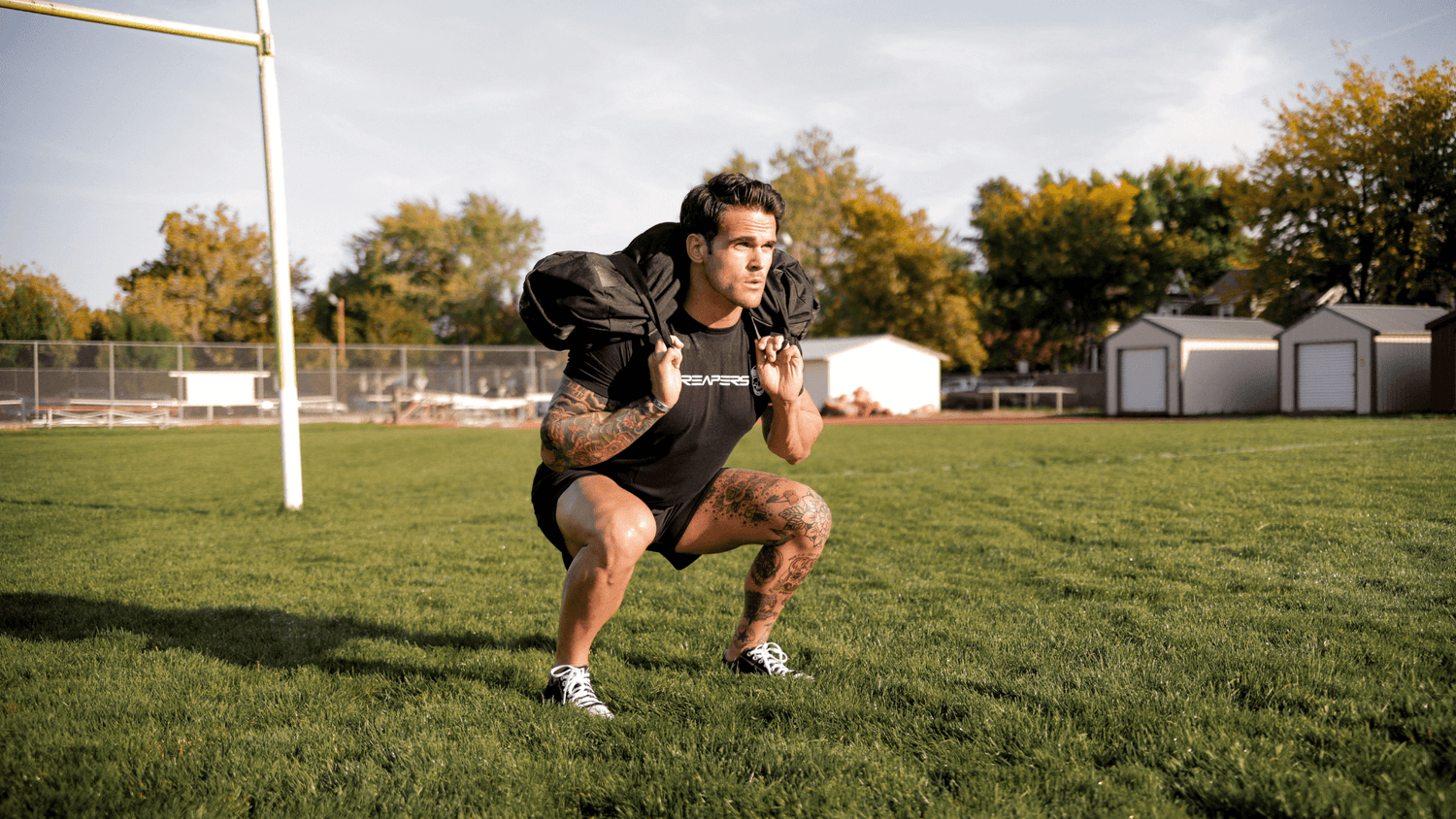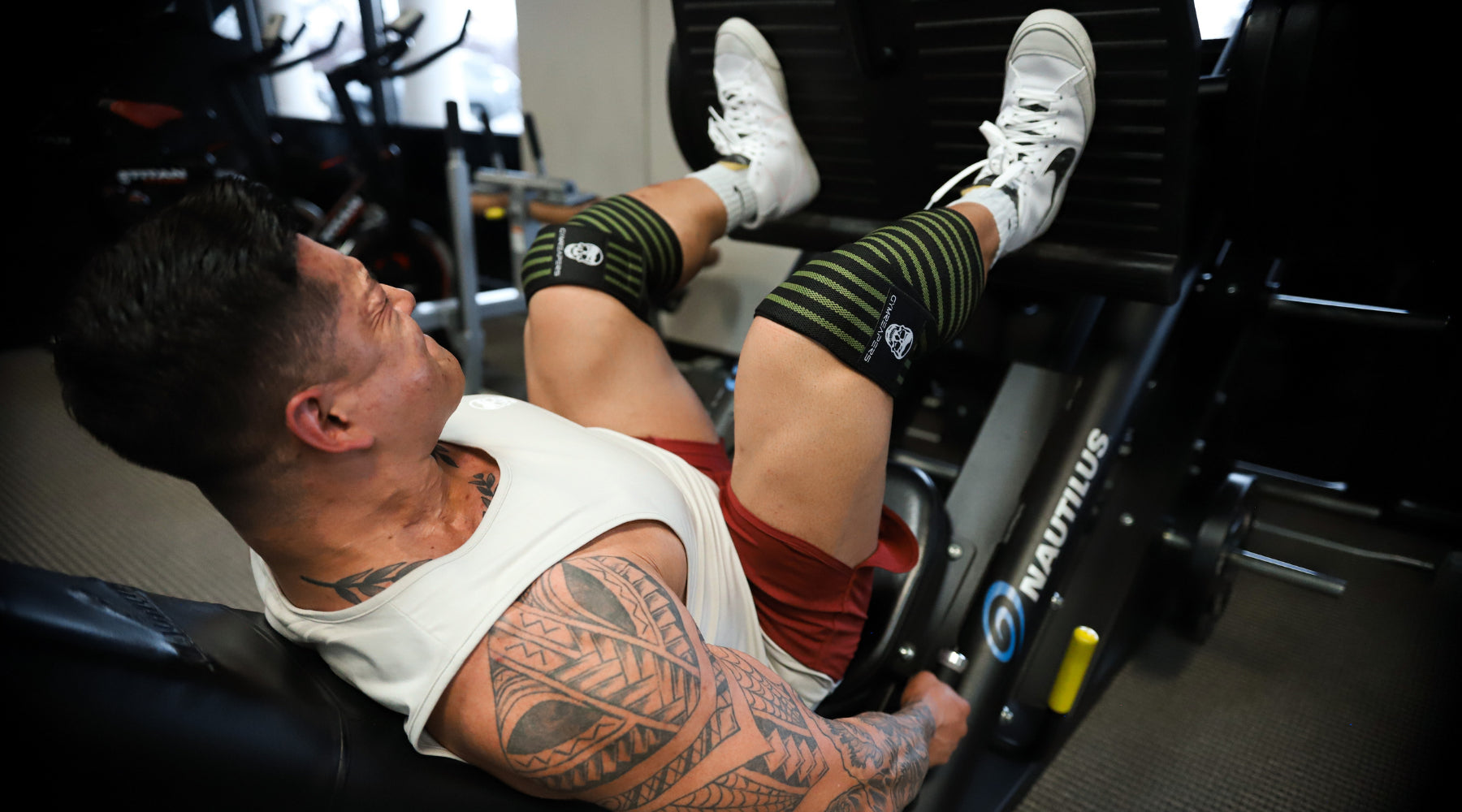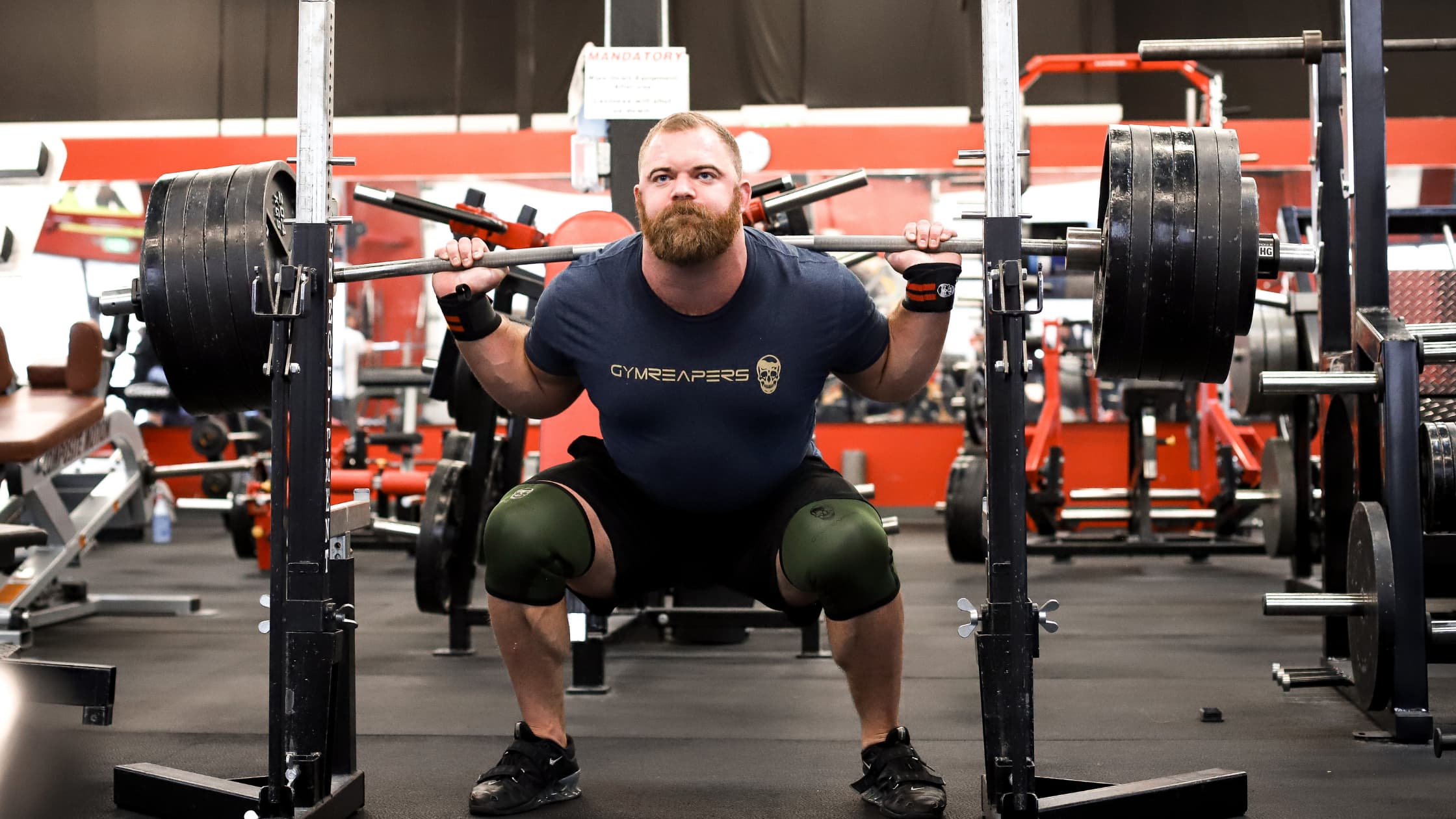When’s the last time you used a sandbag for your training regimen? In an earlier post, we talked about the benefits of using a strongman sandbag for strength and endurance, but what about a fitness sandbag? Is there a difference between the two?
The short answer is yes. Before we get too far into questions and answers, there is always one big question that comes up, which is: what can I fill my sandbag with? That unsurprising answer is sand.
You don’t have to be too picky when it comes to choosing the type of sand. However, the most common type of sand is an all-purpose versatile sand (like Plaster or Mason sand), which is easily found in most hardware stores.
Now, there is a difference between a strongman sandbag and a fitness sandbag. We’ll get to more details about training sandbags shortly, but the main difference is that a training sandbag has handles, which makes it easier to transport and perform certain moves.
By incorporating it into your workout routine, a training sandbag will help you develop an amazing grip, stronger lower and upper body, and a stable musculoskeletal system.

Is sandbag training effective?
In short, the answer is yes. For anyone that’s looking to build strength and conditioning, using a fitness sandbag is a fantastic tool. Whether you’re just starting a healthier lifestyle, are an avid CrossFit athlete, weightlifter, or fitness enthusiast, a fitness sandbag is perfect for a variety of training workouts.
A fair warning to all, training with a sandbag is difficult and most people tend to be able to lift only about 50% of the weight they normally lift with a barbell.
What makes a fitness sandbag such a great piece of training equipment to workout with? One big difference is the versatility it brings. Because the bag is filled with sand, it constantly shifts, which put technique and endurance to the ultimate test.
You can also put a fitness sandbag to use no matter your health goal. If you’re looking to build strength, use them for squats and deadlifts. If you’re more into conditioning, you can use a sandbag as a substitute for kettlebells to burn calories and lose fat.
5 benefits of fitness sandbag training
Sandbags have been used for structured training as far back as the late 1800s. Today, fitness sandbags used by a variety of people from combat training, sport-specific training, and as strength and conditioning equipment for regular gym-goers.
If you’re thinking about incorporating sandbags into your routine, below are the top five benefits that fitness sandbag training brings.
1) Fitness sandbags improve stability
As we mentioned above, sandbags are somewhat unpredictable due to the fluidity of its contents. As you move through the workout you’re forced to concentrate on your form, which can be difficult even for advanced trainers.
2) Sandbags travel with you easily
If you’re working out from home or a garage gym, a fitness sandbag is an awesome tool to build grip strength. Since it’s lightweight and portable (when empty), you can take it anywhere and fill it with new sand upon arrival.
3) Sandbags boost performance
A sandbag can often simulate an object or person. If you’re active and want to improve your performance with unique drills like load carries, sprint drag, throws, or combat simulations, then fitness sandbag training is definitely worth it.
4) Help build better mental strength
We’ve covered how fitness sandbag training builds physical strength, but there are serious mental benefits, too. Thinking about your positioning and transitions between exercises helps work on your critical and tactical thinking.
5) Strengthen your planes of motion
Did you know your body moves in three different planes of motion? Fitness sandbag training activates your sagittal, frontal, and transverse dimensions that help maintain the body’s structure and help prevent injuries (1). By using a sandbag, you’re challenging each plane by creating stress through movement.
The best training sandbag exercises
Before you begin training with a fitness sandbag, it’s wise to not rush into assuming you can handle a certain weight. How much weight should you use for sandbag training? That depends on your fitness level, but it’s been said that most people can lift about 50% less weight than they would with a barbell.
Hypothetically, if you can bench or lift a barbell weighing 140 pounds, you’d likely start with a 60-70 pound sandbag. For beginners (and the exercises we’ll recommend below), it’s suggested to test out the weight that you can do for 20 to 30 repetitions.
Beginner sandbag exercises
Whether you want to perform these exercises as individual movements with minimal rest time in between exercises. Try to complete 30 repetitions of each of the beginner sandbag exercises below.
- Sandbag overhead press
- Sandbag back squat
- Sandbag lunges
- Sandbag high pull (row)
Advanced sandbag exercises
The exercises below are designed to challenge athletes who have previous experience with fitness sandbags or have an advanced technique and endurance skill set. Complete the workouts below as a circuit, aiming for 100 repetitions of each move.
Workout 1
- Sandbag load carry
- Mountain climbers (60 seconds)
- Sandbag lunges
Workout 2
- Sandbag overhead press
- Jump rope in place (60 seconds)
Workout 3
- Sandbag snatch
- Sandbag back squats
- Sandbag get-ups
- Box jumps (60 seconds)

Shop Sandbags
Choosing Fitness Sandbag Weight and Material
Sandbags come in a variety of styles, colors, and options. As we mentioned earlier, fitness sandbags come with handles for versatility and handling. Strongman sandbags are designed without a handle to give you a bigger grip challenge. When choosing a sandbag, be sure you choose a sandbag that fits your fitness goals and training objectives.
How do I decide what kind of sandbag is best?
Some of the things to look for in any fitness sandbag is based on quality. The best fitness sandbag has a tight seal to avoid sand leaks or dust particles from falling out.
Also, look for a strong zipper (preferably with a covered with material so it doesn’t dig into your body). A material (like durable nylon) is essential for the longevity and durability of any fitness sandbag.
How much weight should I use for sandbag training?
That’s one of the most frequently asked specifications from people looking for a fitness sandbag. The answer will depend on your fitness level, so pick a fitness sandbag that can sustain your current and future goals.
Investing in a fitness sandbag capable of holding 100 pounds (for example) can be optimal because you can choose the fill level (up to 100 pounds) as you develop strength and endurance.
Experiencing the difference
We’ve covered a lot of information about fitness sandbags and it’s our hope that it’s useful to you if you’re looking to perform sandbag training. In this article, you’ve discovered a full overview of fitness sandbags, including who can use sandbags, some of the sandbag benefits, recommended sandbag workouts, and how to choose the right sandbag material.
If you’re looking for a quality fitness sandbag to help you reach your fitness goals, mix up your routine, or simply a new challenge, Gymreapers currently offers premium strongman sandbags that are ideal for the gym, beach, CrossFit, garage gyms, and any functional training location.
Check out the sizes and options today! Let us know in the comments below if you train with fitness sandbags or if you plan to in the future.
References
- Edwards, M. (2017). The Planes of Motion Explained. Retrieved 17 September 2020, from https://www.acefitness.org/fitness-certifications/ace-answers/exam-preparation-blog/2863/the-planes-of-motion-explained/














Leave a comment
All comments are moderated before being published.
This site is protected by hCaptcha and the hCaptcha Privacy Policy and Terms of Service apply.